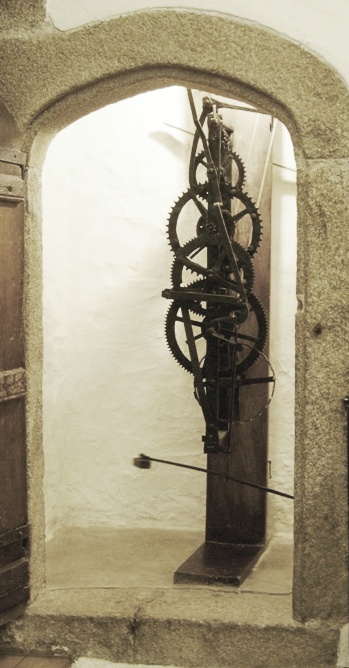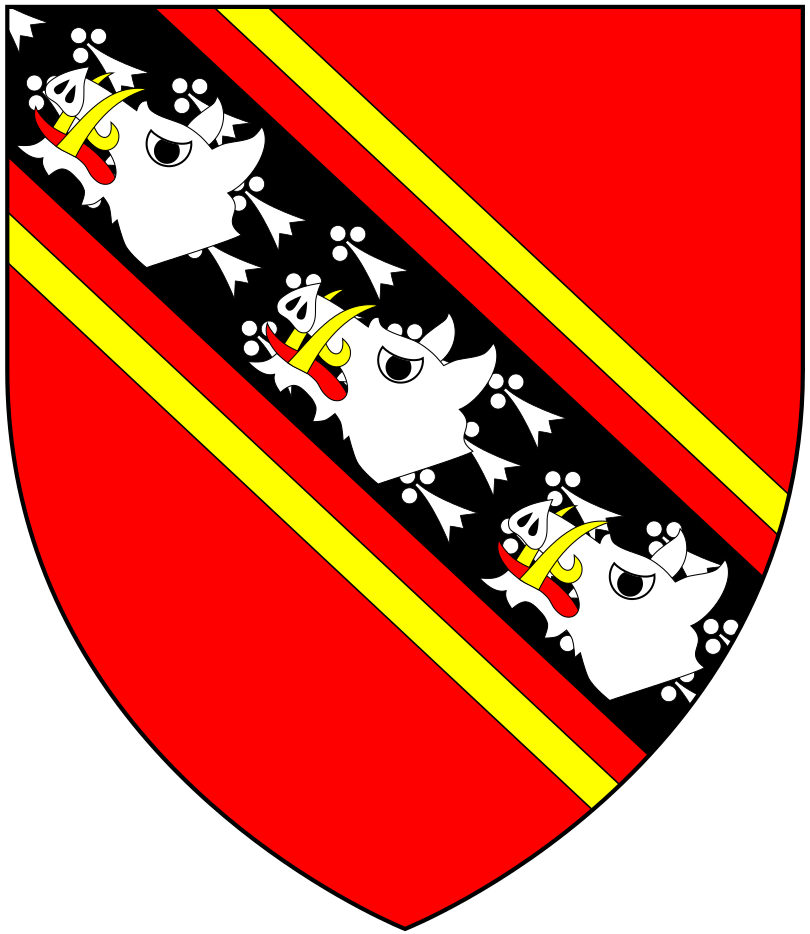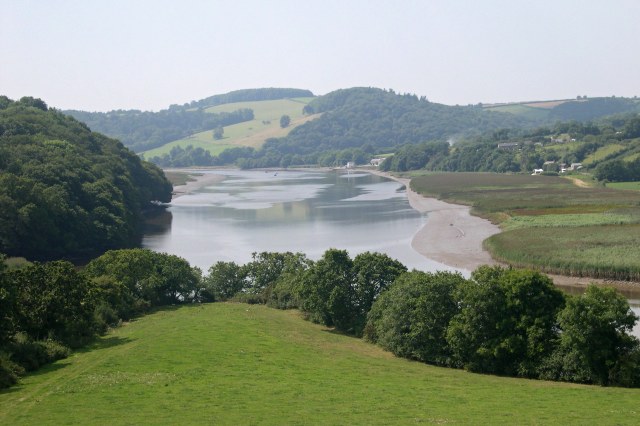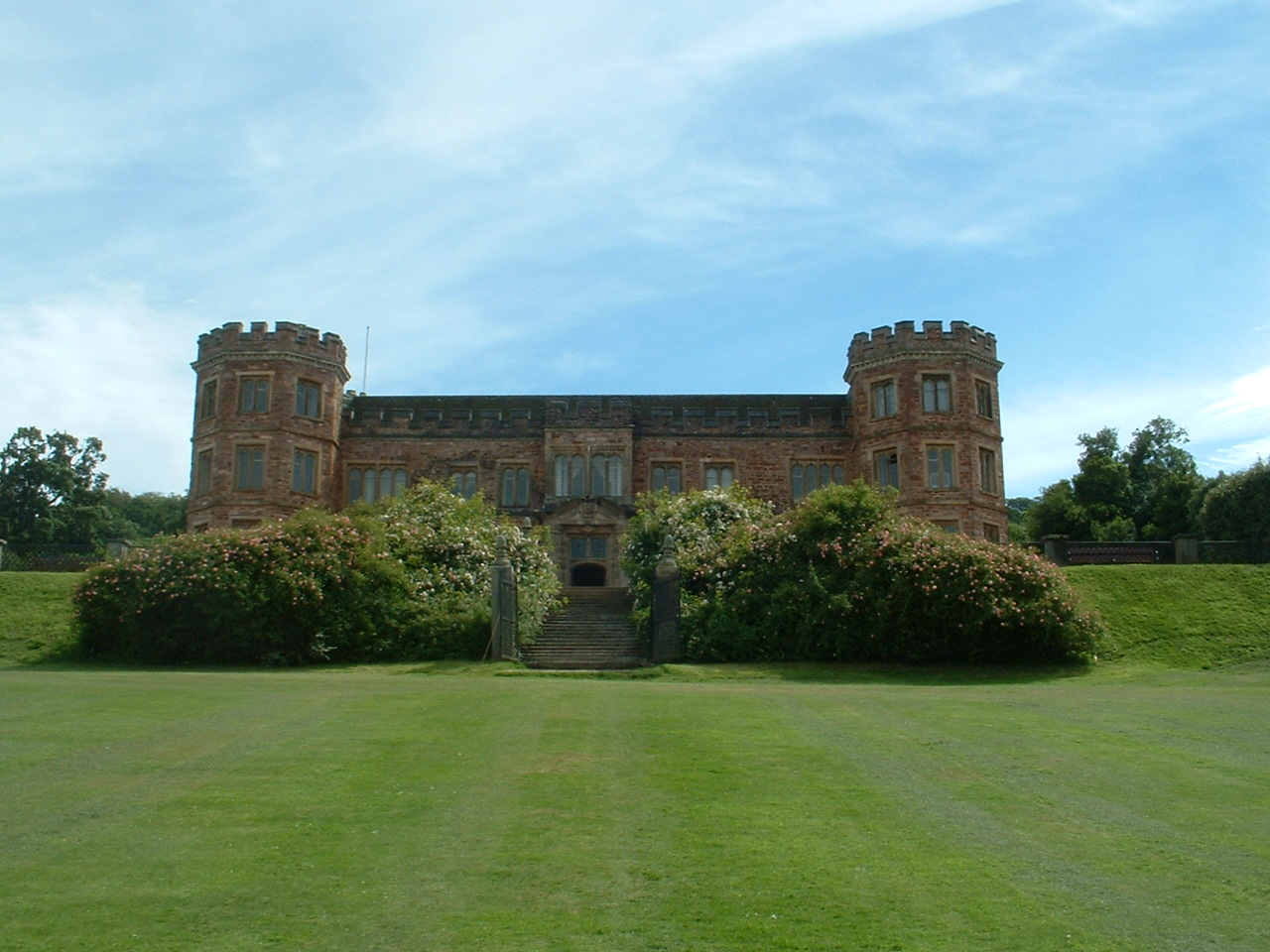|
Cotehele
Cotehele ( kw, Kosheyl) is a medieval house with Tudor additions, situated in the parish of Calstock in the east of Cornwall, England, and now belonging to the National Trust. It is a rambling granite and slate-stone manor house on the banks of the River Tamar that has been little changed over five centuries. It was built by the Edgecumbe family in 1458 after the original Manor House was pulled down. Sir Richard Edgecumbe came into the property after fighting for Henry Tudor in the Battle of Bosworth. He was gifted with money and the original Manor House and estate and then proceeded to build Cotehele. History Probably originating circa 1300, the main phases of building appear to have been started by Sir Richard Edgcumbe from 1485–89 and followed by his son, Sir Piers Edgcumbe, from 1489–152This house is one of the least altered of the Tudor houses in the United Kingdom. The outbuildings include a stone dovecote in a remarkable state of preservation. For centuri ... [...More Info...] [...Related Items...] OR: [Wikipedia] [Google] [Baidu] |
Cotehele Clock
The Cotehele clock is situated at Cotehele, Cotehele House, Calstock, Cornwall. It is the earliest turret clock in the United Kingdom still working in an unaltered state and in its original position. It was probably installed between 1493 and 1521. History The first chapel at Cotehele House dates from around 1411, but only parts of the north and south wall of the original building survive. Piers Edgcumbe inherited Cotehele House in 1489. He married Joan Durnford in 1493 and she died in 1521. He remarried in 1525. Two important Altarpiece, altarpieces commemorate the union of Edgcumbe and Durnford, so it is likely that the building work on the chapel was carried out during the early years of their marriage from 1493 onward. The alcove that houses the clock was added into the west wall of the chapel (the plan below has north on the right, so the west wall is at the top of the drawing). The 2004 building report states that the west wall was probably rebuilt during the work carrie ... [...More Info...] [...Related Items...] OR: [Wikipedia] [Google] [Baidu] |
Calstock
Calstock ( kw, Kalstok) is a civil parish and a large village in south east Cornwall, England, United Kingdom, on the border with Devon. The village is situated on the River Tamar south west of Tavistock and north of Plymouth. The parish had a population of 6,095 in the 2001 census. This had increased to 6,431 at the 2011 census. The parish encompasses of land, of water, and of the tidal Tamar. As well as Calstock, other settlements in the parish include Albaston, Chilsworthy, Gunnislake, Harrowbarrow, Latchley, Metherell, Coxpark, Dimson, Drakewalls, Norris Green, Rising Sun and St Ann's Chapel. Calstock village is within the Tamar Valley AONB, is overlooked by Cotehele house and gardens, and lies on the scenic Tamar Valley railway. Calstock railway station opened on 2 March 1908. The village is twinned with Saint-Thuriau in Brittany, France. Early history There is evidence of human settlement in Calstock from Roman, or pre-Roman times, settlers attracted by ... [...More Info...] [...Related Items...] OR: [Wikipedia] [Google] [Baidu] |
Prospect Tower
Prospect Tower is a folly on the Cotehele Estate. It has three sides and is 60ft high. When the National Trust was given the Cotehele Estate in 1947 the Trust renovated the tower and constructed a wooden spiral staircase inside, to allow visitors. The Tower was last renovated in 2018 and is still open to the public. History Prospect Tower was built by the 2nd Earl of Mount Edgcumbe in celebration of the royal visit of King George III George III (George William Frederick; 4 June 173829 January 1820) was King of Great Britain and of Ireland from 25 October 1760 until the union of the two kingdoms on 1 January 1801, after which he was King of the United Kingdom of Great Br .... References External linksCotehele Website [...More Info...] [...Related Items...] OR: [Wikipedia] [Google] [Baidu] |
Peter Edgecumbe (died 1539)
Sir Peter (or Piers) Edgecumbe (1468/69 – 1539) of Cotehele, Cornwall was an English courtier, sheriff and Member of Parliament. He was born the son of Richard Edgcumbe (died 1489), Richard Edgecumbe of Meavy, Devon and Cotehele and admitted to Lincoln's Inn in 1488. He succeeded his father in 1489. He was an esquire of the body by 1489 and created a Knight of the Bath by 1504. He succeeded his father as constable of Launceston Castle from 1489 to his own death. He was pricked High Sheriff of Devon for 1494–95, 1497–98, 1518–19 and 1529–30 and High Sheriff of Cornwall for 1498–99, 1505–06, 1516–17 and 1534–35. He was knight of the shire for Cornwall in the Parliament of England in 1515 and 1529. In 1497, he enlisted the men of Devon and Cornwall to suppress Perkin Warbeck's rebellion and was involved in the relief of Exeter. In 1513 he accompanied Henry VIII to France where, in recognition of his bravery, he was made knight banneret. In 1520 he was present with ... [...More Info...] [...Related Items...] OR: [Wikipedia] [Google] [Baidu] |
Richard Edgcumbe (died 1489)
Sir Richard Edgcumbe (alias ''Edgecombe'', etc.) (ca. 14438 September 1489) of Cotehele in the parish of Calstock in Cornwall, was an English courtier and Member of Parliament. Origins He was the son and heir of Piers Edgcumbe of Cotehele by his wife Elizabeth Holland, daughter and heiress of Richard Holland. The family is earliest recorded in 1292 when Richard Edgcombe was seated at the manor of ''Edgcombe'' in the parish of Milton Abbot in Devon, from which his family took their surname. His grandson William Edgcombe (d.1380) married the heiress of Cothele, to which manor he moved his residence. Career He was a Member of Parliament for Tavistock in Devon, from 1467 to 1468. He was a Lancastrian and had his lands confiscated in 1471 by the Yorkist King Edward IV, although these were returned to him the next year. Angered by Richard of Gloucester’s usurpation of the throne in 1483 and the rumours of the murder of Edward V and his brother in the Tower of London, Edgcumbe j ... [...More Info...] [...Related Items...] OR: [Wikipedia] [Google] [Baidu] |
River Tamar
The Tamar (; kw, Dowr Tamar) is a river in south west England, that forms most of the border between Devon (to the east) and Cornwall (to the west). A part of the Tamar Valley is a World Heritage Site due to its historic mining activities. The Tamar's source is less than from the north Cornish coast, but it flows southward and its course runs across the peninsula to the south coast. The total length of the river is . At its mouth, the Tamar flows into the Hamoaze before entering Plymouth Sound, a bay of the English Channel. Tributaries of the river include the rivers Inny, Ottery, Kensey and Lynher (or ''St Germans River'') on the Cornish side, and the Deer and Tavy on the Devon side. The name Tamar (or Tamare) was mentioned by Ptolemy in the second century in his ''Geography''. The name is said to mean "great water."Furneaux, Robert. The Tamar: A Great Little River. Ex Libris Press. 1992. Foot, Sarah. ''The River Tamar''. Bossiney Books. 1989.Neale, John. Discovering ... [...More Info...] [...Related Items...] OR: [Wikipedia] [Google] [Baidu] |
Richard Edgcumbe (1499–1562)
Sir Richard Edgcumbe (1499 – 1 February 1562) was an English courtier and politician. Family Richard Edgcumbe was the eldest son of Sir Peter (or Piers) Edgcumbe (1477 – 14 August 1539) of Cotehele, Cornwall, and his first wife, Jane Derneford (d. before 1525), daughter and heir of James Derneford of Stonehouse, Devon, and widow of Charles Dynham of Nutwell, Devon. By his father's first marriage, Richard Edgcumbe had two brothers and three sisters. His mother, Jane, died before 1525, and his father married Catherine St John, the daughter of Sir John St John of Bletsoe, and widow of Sir Gruffudd ap Rhys of Carmarthen. Career Edgcumbe and his brother entered Lincoln's Inn on 2 February 1517. Edgcumbe's grandson, Richard Carew, says that he studied at Oxford, but of this there is no other record. He was among the knights created by Edward Seymour, 1st Earl of Hertford, 18 October 1537, and two years later he succeeded to his father's estates. On a portion of the Stoneho ... [...More Info...] [...Related Items...] OR: [Wikipedia] [Google] [Baidu] |
National Trust For Places Of Historic Interest Or Natural Beauty
The National Trust, formally the National Trust for Places of Historic Interest or Natural Beauty, is a charity and membership organisation for heritage conservation in England, Wales and Northern Ireland. In Scotland, there is a separate and independent National Trust for Scotland. The Trust was founded in 1895 by Octavia Hill, Sir Robert Hunter and Hardwicke Rawnsley to "promote the permanent preservation for the benefit of the Nation of lands and tenements (including buildings) of beauty or historic interest". It was given statutory powers, starting with the National Trust Act 1907. Historically, the Trust acquired land by gift and sometimes by public subscription and appeal, but after World War II the loss of country houses resulted in many such properties being acquired either by gift from the former owners or through the National Land Fund. Country houses and estates still make up a significant part of its holdings, but it is also known for its protection of wild lands ... [...More Info...] [...Related Items...] OR: [Wikipedia] [Google] [Baidu] |
National Trust
The National Trust, formally the National Trust for Places of Historic Interest or Natural Beauty, is a charity and membership organisation for heritage conservation in England, Wales and Northern Ireland. In Scotland, there is a separate and independent National Trust for Scotland. The Trust was founded in 1895 by Octavia Hill, Sir Robert Hunter and Hardwicke Rawnsley to "promote the permanent preservation for the benefit of the Nation of lands and tenements (including buildings) of beauty or historic interest". It was given statutory powers, starting with the National Trust Act 1907. Historically, the Trust acquired land by gift and sometimes by public subscription and appeal, but after World War II the loss of country houses resulted in many such properties being acquired either by gift from the former owners or through the National Land Fund. Country houses and estates still make up a significant part of its holdings, but it is also known for its protection of wild lands ... [...More Info...] [...Related Items...] OR: [Wikipedia] [Google] [Baidu] |
Earl Of Mount Edgcumbe
Earl of Mount Edgcumbe is a title in the Peerage of Great Britain. It was created in 1789 for George Edgcumbe, 3rd Baron Edgcumbe. This branch of the Edgcumbe family descends from Sir Piers Edgcumbe of Cotehele in Cornwall (descended from the younger son of Richard Edgcumbe ( fl. 1324) of Edgcumbe in the parish of Milton Abbot in Devon), who acquired an estate near Plymouth through marriage in the early 16th century, which was later re-named "Mount Edgcumbe" (a common tradition shared by several estates particularly on the south coast of Devon, for example Mount Tavy, Mount Radford, Mount Boone, Mount Gold (Plymouth), Mount Wise, etc.). His descendant Richard Edgcumbe was a prominent politician and served as Paymaster-General of Ireland and as Chancellor of the Duchy of Lancaster. In 1742, he was created Baron Edgcumbe, of Mount Edgcumbe in the County of Devon, in the Peerage of Great Britain. Richard Edgcumbe was succeeded by his eldest son, the second Baron. He represented ... [...More Info...] [...Related Items...] OR: [Wikipedia] [Google] [Baidu] |
Thomas Becket
Thomas Becket (), also known as Saint Thomas of Canterbury, Thomas of London and later Thomas à Becket (21 December 1119 or 1120 – 29 December 1170), was an English nobleman who served as Lord Chancellor from 1155 to 1162, and then notably as Archbishop of Canterbury from 1162 until his murder in 1170. He is venerated as a saint and martyr by the Catholic Church and the Anglican Communion. He engaged in conflict with Henry II, King of England, over the rights and privileges of the Church and was murdered by followers of the king in Canterbury Cathedral. Soon after his death, he was canonised by Pope Alexander III. Sources The main sources for the life of Becket are a number of biographies written by contemporaries. A few of these documents are by unknown writers, although traditional historiography has given them names. The known biographers are John of Salisbury, Edward Grim, Benedict of Peterborough, William of Canterbury, William fitzStephen, Guernes of Pont-Sa ... [...More Info...] [...Related Items...] OR: [Wikipedia] [Google] [Baidu] |
St George
Saint George (Greek language, Greek: Γεώργιος (Geórgios), Latin language, Latin: Georgius, Arabic language, Arabic: القديس جرجس; died 23 April 303), also George of Lydda, was a Christians, Christian who is venerated as a saint in Christianity. According to tradition he was a soldier in the Roman army. Saint George was a soldier of Cappadocian Greeks, Cappadocian Greek origin and member of the Praetorian Guard for Roman emperor Diocletian, who was sentenced to death for refusing to recant his Christian faith. He became one of the most Saint George in devotions, traditions and prayers, venerated saints and Great martyr, megalomartyrs in Christianity, and he has been especially venerated as a military saint since the Crusader States, Crusades. He is respected by Christians, Druze, as well as some Muslims as a martyr of monotheistic faith. In hagiography, as one of the Fourteen Holy Helpers and one of the most prominent military saints, he is immortalized in the ... [...More Info...] [...Related Items...] OR: [Wikipedia] [Google] [Baidu] |








